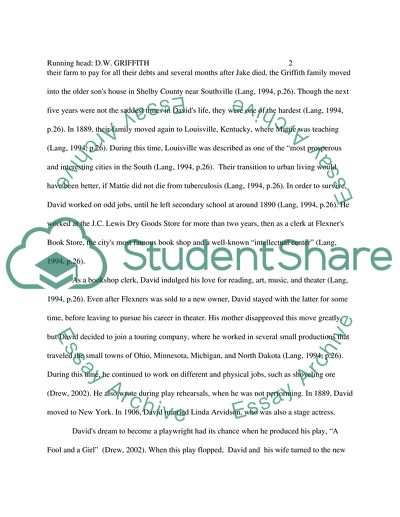Cite this document
(D.W. Griffith: The Life and Achievements of the Genius Filmmaker Research Paper, n.d.)
D.W. Griffith: The Life and Achievements of the Genius Filmmaker Research Paper. Retrieved from https://studentshare.org/visual-arts-film-studies/1754760-dwgriffith-a-director
D.W. Griffith: The Life and Achievements of the Genius Filmmaker Research Paper. Retrieved from https://studentshare.org/visual-arts-film-studies/1754760-dwgriffith-a-director
(D.W. Griffith: The Life and Achievements of the Genius Filmmaker Research Paper)
D.W. Griffith: The Life and Achievements of the Genius Filmmaker Research Paper. https://studentshare.org/visual-arts-film-studies/1754760-dwgriffith-a-director.
D.W. Griffith: The Life and Achievements of the Genius Filmmaker Research Paper. https://studentshare.org/visual-arts-film-studies/1754760-dwgriffith-a-director.
“D.W. Griffith: The Life and Achievements of the Genius Filmmaker Research Paper”, n.d. https://studentshare.org/visual-arts-film-studies/1754760-dwgriffith-a-director.


